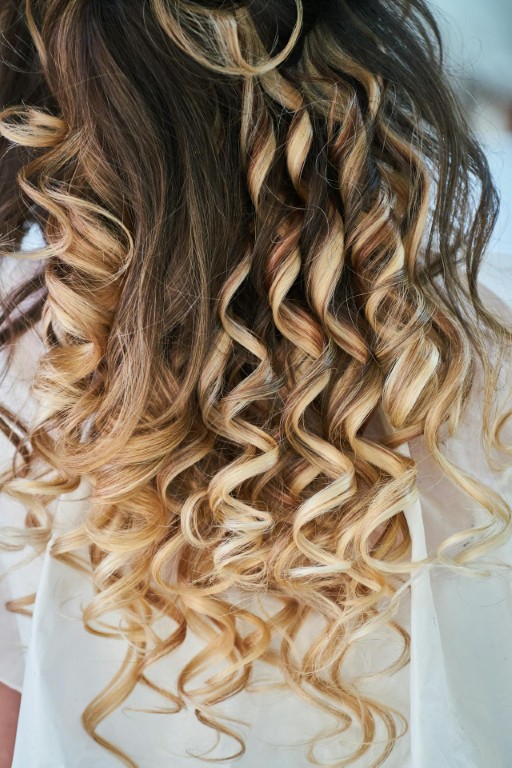What Type of Wavy Extension Texture Should You Choose for Soft, Loose Waves?

Achieving soft, loose waves starts with selecting the right wavy extension texture that blends naturally with your hair. Body wave extensions are often the best choice for those seeking soft, loose waves, as they feature smooth, flowing patterns without being too straight or too curly. Using wavy halo hair extensions for added bounce can give the style more volume and natural flow. For example, fullness at the mid-lengths and ends helps the waves look evenly distributed. Choosing a texture that closely matches your own ensures a smooth, blended appearance
When choosing a wavy texture, it’s important to match the extension with your natural wave type, such as 2A, 2B, or 2C, to ensure a seamless blend. The right texture and quality make maintenance simple and styling effortless, letting natural waves shine through.
Key Takeaways
- Choose body wave or similar textures for natural-looking, soft waves.
- Match extension texture to your natural hair for best results.
- Human hair extensions allow easy styling and natural blending.
Choosing the Best Wavy Extension Texture for Soft, Loose Waves
Selecting the right wavy extension texture depends on understanding both the nuances of natural wavy hair and the unique features of different extension patterns. Making the appropriate choice ensures extensions blend seamlessly and deliver soft, natural movement.
Understanding Wavy Hair Textures: 2A, 2B, and 2C
Wavy hair is commonly categorized into types 2A, 2B, and 2C. Each of these subtypes has distinct characteristics that impact how different extension textures will blend. Type 2A wavy hair is fine, thin, and forms loose, natural S-shaped waves. It has minimal volume and frizz, so it typically pairs best with extensions that have a gentle wave pattern.
Type 2B has more defined S-waves and slightly more body. This hair type experiences some frizz and holds volume, making it compatible with loose wave or body wave extensions for enhancement without overwhelming the natural texture. Type 2C features thick, coarser strands, with waves that are almost curls. This hair often requires a more structured wavy pattern, such as deep wave extensions, for an even blend.
Comparing Popular Wavy Extension Patterns: Body Wave, Loose Wave, Deep Wave
Wavy hair extensions are offered in several common patterns, each offering a distinct visual effect and styling versatility. Body wave extensions create soft, large S-shaped waves. These deliver natural movement and volume while remaining easy to blend with most natural wavy hair types, especially 2A and 2B. Loose wave extensions have a slightly tighter wave pattern than body wave but still offer gentle, cohesive waves. They are ideal for individuals who want evident texture and dimension without moving towards a curly look. These extensions can be found in clip-in, tape-in, and other formats.
Deep wave extensions provide tighter, almost-curly waves with greater definition and body. Deep wave textures suit 2C hair types or anyone needing added fullness and more visible texture but without sharp, spiral curls. Choosing between these patterns depends on the natural wave of the wearer’s hair and the desired balance between subtlety and pronounced texture.
Factors to Consider: Hair Type, Thickness, and Desired Blend
Matching the extension texture to the natural hair type is critical for a seamless look. Individuals with fine or thin 2A hair often prefer lighter, less voluminous textures such as body wave or loose wave, which prevent extensions from appearing bulky. For those with thick or coarse hair, like types 2B and 2C, a fuller extension like deep wave, may offer better balance and integration.
The desired blend is also influenced by the installation method. Clip-in hair extensions allow temporary changes and work best with precision-matched textures. Tape-in extensions create a more permanent, integrated result, but require careful selection to match density and natural pattern. Human hair extensions generally offer the best blending capability regardless of installation method due to their natural appearance and movement.
Styling and Caring for Wavy Hair Extensions
Proper styling and consistent care are essential for maintaining the shape, softness, and lifespan of wavy hair extensions. Key products and techniques can make everyday maintenance easy while keeping loose waves defined and healthy.
Heat Styling Techniques for Effortless, Loose Waves
Heat styling tools, such as a curling iron or curling wand, allow users to enhance or refresh the natural S-shaped pattern of wavy extensions. For best results, it is recommended to use a device with adjustable temperature settings and to avoid high heat, which can cause dryness or damage.
Before using any hot tool, always apply a heat protectant spray to create a barrier, helping to prevent breakage and dullness. For soft, loose waves, wrap sections of hair loosely around the barrel, holding briefly before releasing. Alternate the direction of each section to create a more natural blend.
Recommended Care Products: Sulfate-Free Shampoo, Deep Conditioners, and Leave-In Treatments
Using appropriate hair care products supports the texture and health of wavy hair extensions. Choose a sulfate-free shampoo to cleanse without stripping moisture or causing frizz gently. Sulfates can be harsh and may weaken the bonds of the extensions.
After washing, apply a deep conditioner once or twice a week to nourish and restore hydration. Deep conditioners help maintain softness and prevent split ends, which is especially important for hair that does not receive natural scalp oils.
Conclusion
Selecting the right wavy extension texture depends on matching the natural pattern and density of one’s hair. Those seeking soft, loose waves often benefit from extensions labeled as “body wave” or “loose wave,” as these provide gentle movement without tight curls.
Texture, blend, and manageability all play critical roles in creating a seamless result. Individuals should consider their hair’s thickness, desired styling options, and level of maintenance before making a final decision.